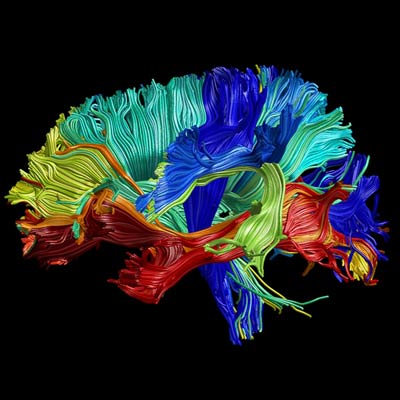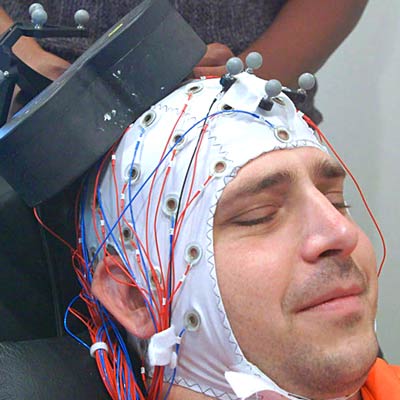Monitoring the signals
The neurons in our brains use electrical activity to relay information. A reverse-engineered brain must recreate these processes, but first scientists need to understand them.
The mind hides its secrets in a tight sack of neurons. For scientists who want to uncover just how our gray, fleshy minds store and process information, mapping the connections between nerve cells gets at only half the story. They must probe the electrical signals that pulse between those nerve cells.
Last year, two labs at Stanford announced a major step toward that goal. They had both developed tools that will let scientists measure the electrical activity of individual neurons in real time. Now scientists can see electrical signals propagate up and down neurons within the brains of living creatures.
"Many people have tried to make effective neural sensors, going back almost 20 years," said Michael Lin, assistant professor of pediatrics and bioengineering, whose research group had developed one of these new tools. "This was one of the more important problems in neuroscience that hadn't been solved."
When a neuron fires, the voltage changes as the signal travels down its length. Supported by Stanford Bio-X, Lin and Mark Schnitzer, associate professor of biology and applied physics, independently engineered proteins that could sit within the membranes of nerves and light up in response to changes in voltage. These voltage-sensing proteins can be inserted into a specific set of nerves that researchers want to study – such as nerves involved in vision – and monitor how those cells light up in response to different types of stimuli.
Researchers in Schnitzer's laboratory inserted their voltage-sensing protein into the brains of mice and used a camera developed by his lab to image neural activity in real time.
Over the past year, researchers in Lin's laboratory have successfully tested their voltage-sensing protein, known as ASAP, in the brains of fruit flies. They are collaborating with other Stanford researchers to measure how individual neurons in fruit fly brains respond to light. They have also shared ASAP with scientists across the world.
"We've sent ASAP to over 250 different labs that are each interested in different systems and different questions in neuroscience," said Francois St-Pierre, a postdoc in Lin's lab who led efforts to create and test ASAP.
These engineered proteins could shed new light on the mind's ability to sense the world around us, store information and craft a response, knowledge that could bring scientists closer to mimicking the processes governing our own gray matter.

